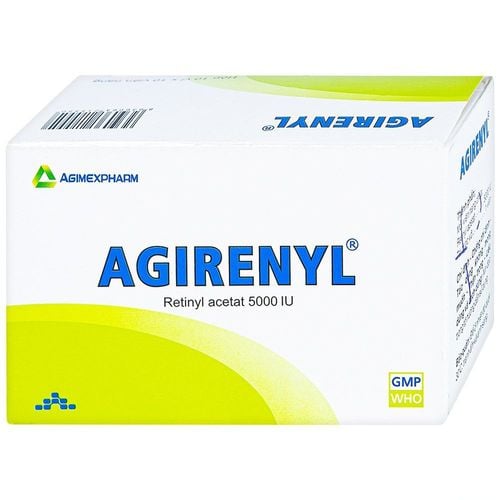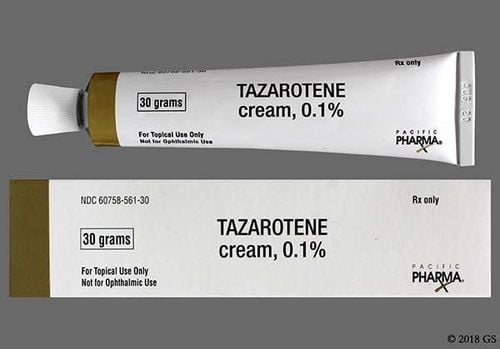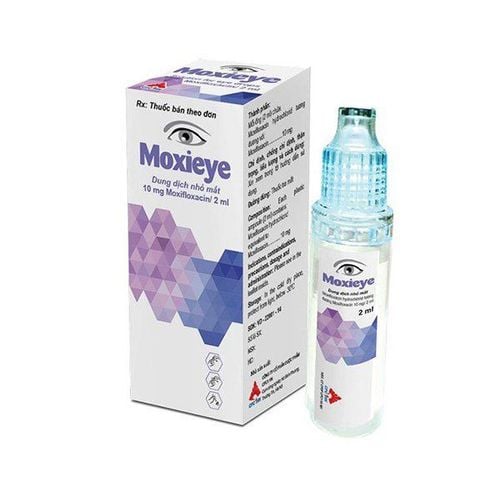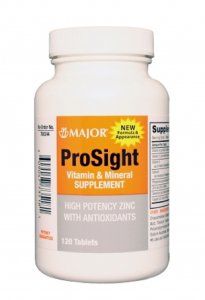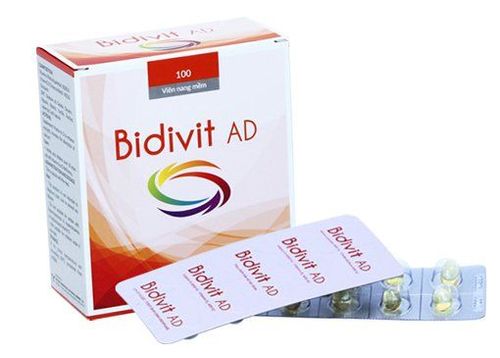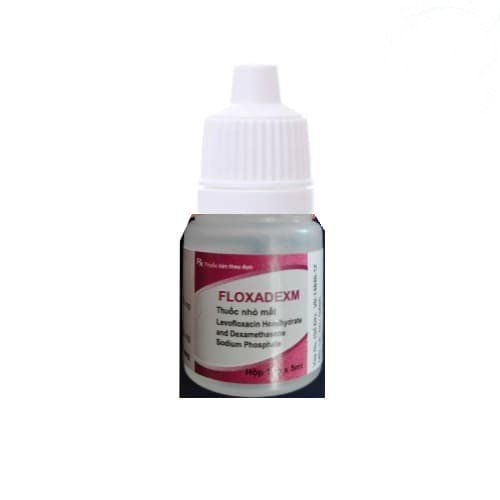This is an automatically translated article.
Posted by Doctor Ma Van Tham and Doctor Nguyen Nam Phong, Department of Pediatrics - Neonatology - Vinmec Phu Quoc International General Hospital
Vitamin A deficiency is a common disease in children <3 Vitamin A deficiency makes children grow slowly, susceptible to infections, increase the risk of death, dry eyes leading to blindness.
1. Harm of Vitamin A deficiency
Around the world every year, about 500,000 children go blind and about 40 million children have mild and moderate vitamin A deficiency.
In Vietnam:
In the community: 0.7% of children have dry eyes due to vitamin A deficiency, 70,000 children have symptoms of vitamin A deficiency and 4,400 children are blind. In hospital: Common in malnourished patients (25.5% of malnourished patients have symptoms of vitamin A deficiency and 9.1% are blind due to vitamin A deficiency).

Trẻ khô mắt do thiếu vitamin A
2. The role of vitamin A in the body
Vitamin A participates in the growth process, if the child lacks vitamin A, the child will not eat and grow slowly. Vitamin A combines with a specific protein to form Rhodopsin, which is necessary for vision in low light, so the early manifestation of the disease is a decrease in the ability to adapt to the dark. Vitamin A participates in the differentiation of epithelial tissues such as the skin, trachea, and small intestine. When vitamin A deficiency, the production of mucus decreases, dryness and keratinization of the mucous membranes (stomach, esophagus, bronchi, ...) conjunctival epithelium, cornea, lacrimal gland become keratinized leading to dry eyes .
Vitamin A is involved in the immune response process. Lack of vitamin A causes immunosuppression, children are susceptible to infections.
3. Vitamin A metabolism in the body
Sources of vitamin A:
Vitamin A in food has 2 sources:
Animal foods such as liver, milk, egg yolks, fish... in the form of easily absorbed retinol. Plant foods such as oranges, gac fruit, papaya, chili, persimmon, ..., dark vegetables such as spinach, amaranth, ... in the form of provitamin A (β Caroten) which is difficult to steam more revenue. Vitamin A requirement in children:
Vitamin A requirement in children: 300 - 400 μg vitamin A in 1 day.
(1 International Retinol Unit = 0.3μg Retinol).
Absorption:
Vitamin A in food is absorbed in the small intestine, this absorption requires bile salts, fat, and pancreatic juice. Most vitamin A is transported to the liver and stored in the liver as retinol esters. Vitamin A in food is absorbed about 80% by the body and stored in the liver 30 - 50%. When the body lacks vitamin A, the amount of retinol ester mobilized is broken down into retinol. Retinol binds to a specific protein called a retinol-binding protein (Retinol-Binding-Protein or RBP). This protein is synthesized in the liver and is only released into the bloodstream in conjugated form with retinol and transports retinol where it is needed. In vitamin A deficiency, the release of RBP is inhibited, so the amount of vitamin A and RBP in serum is reduced.

Vitamin A rất quan trọng đối với trẻ
4. Causes of vitamin A deficiency
Due to lack of supply
Eat too much rice flour but not greasy. Children artificially fed with skimmed cow's milk. Eat less vegetables, animal foods have a lot of vitamin A. Due to poor absorption
Children have prolonged diarrhea. Children with hepatobiliary diseases: liver failure, biliary obstruction. Children are severely malnourished. Children with infectious diseases: measles, dysentery. Favorable conditions
Common in young children because the needs are 5-6 times higher than that of older children and adults. Common in foster children, malnourished children, and infected children.

Trẻ hấp thu kém gây thiếu vitamin A
5. Symptoms of Vitamin A deficiency
5.1. Clinical symptoms Whole body:
Children are tired, poor appetite, growth retardation. Dry skin, dry hair that breaks easily. Children are prone to respiratory infections, digestive disorders. Eye: According to WHO classification, includes the following stages of damage:
Night blindness (symbolized by XN): The earliest sign of vitamin A deficiency in the eye. Due to reduced supply of vitamin A to the rod cells of the retina, the retina's ability to adapt to the dark decreases. At dusk, children often can't see, children stumble, follow the wall, can't recognize familiar people,... Dry conjunctiva (X1A): Dry conjunctival membrane, not shiny as usual, conjunctivitis The conjunctiva thickens with wrinkles and changes color to light gray, pale yellow or dark brown. Bitot's Streak (X1B): White, glossy streaks on the synovial membrane with a triangular shape due to thickened and scaly epithelium on both sides of the eye but usually on the temporal side. Corneal dryness (X2): The cornea is dry and loses its luster, the cornea is opaque like a fog, usually starting from the lower part of the cornea.

Trẻ biếng ăn và chậm lớn
The above four stages, if treated promptly, will completely heal without leaving any sequelae:
Corneal ulceration of less than 1/3 of the corneal area (X3A): Because the cornea is dry, it is easy to get infections and ulcers if treated untimely rapid ulceration and corneal perforation. Corneal ulceration over 1/3 of the cornea (X3B): The cornea is ulcerated, can be perforated, the iris protrudes out and the eyeball atrophy causes permanent blindness. Corneal scarring (XS): A sequelae of corneal ulceration, depending on the location of the scar large or small, it affects the child's vision. Dry fundus (XF): Manifestation of chronic vitamin A deficiency is common in school age. Ophthalmoscopy will reveal bright white areas scattered along the retinal blood vessels that are reddish brown. 5.2. Laboratory Blood levels of vitamin A fall below 10μg% (normal 20-50μg%). RBP in the blood decreased (normally 20 - 30 μg/ml).
6. Treatment of vitamin A deficiency
Indications:
For all children with dry eyes. Children with severe malnutrition Oral:
Youth < 1 year old Children > 1 year old
Total dose 300,000 units 600,000 units. Day 1 100,000 VND 200,000 VND. Day 2 100,000 VND 200,000 VND. After 2 weeks 100,000 VND 200,000 VND. Deep intramuscular injection: The dose is equal to 1/2 of the oral dose. For children with liver disease, prolonged digestive disorders, vomiting a lot.
Note: When taking vitamin A, it is necessary to monitor vitamin A toxicity. Manifestations such as vomiting, dizziness, headache, increased sweating, enlarged fontanelle, double vision, swollen tongue, bleeding, jaundice, poor appetite. Laboratory tests showed decreased prothrombin, increased blood calcium, increased blood lipids.
In the eyes: Instill 0.4% chloramphenicol solution or water-soluble vitamin A 2-3 times a day.

Trẻ được uống vitamin A
7. Prevention of vitamin A deficiency disease
Prevention by diet for mothers and children
For mothers: During pregnancy and lactation, it is necessary to eat more foods rich in vitamin A, eat more fat.
For babies:
Breastfeeding early, from 30 minutes to 1 hour after birth, exclusively for the first 4-6 months, sucking for 18-24 months. Additional food for 4-6 months or more, eat according to the food square. Taking high doses of vitamin A
If there is not enough vitamin A, priority should be given to children at risk of vitamin A deficiency such as children with long-term digestive disorders, children with measles, dysentery, children with moderate malnutrition and mild, prolonged pneumonia, areas with high incidence.
Children under 6 months: if only breastfed, do not need to drink.
If artificially raised, drink 50,000 VND/time, once every 6 months.
Children under 1 year old: 100,000 VND/time; 6 months/time. Children over 1 year old: 200,000 VND/time; 6 months/time. For the mother: after giving birth in the first month, you can drink 200,000 VND/time. During pregnancy and lactation, if vitamin A deficiency is suspected, take 10,000 units/day for 2 weeks.
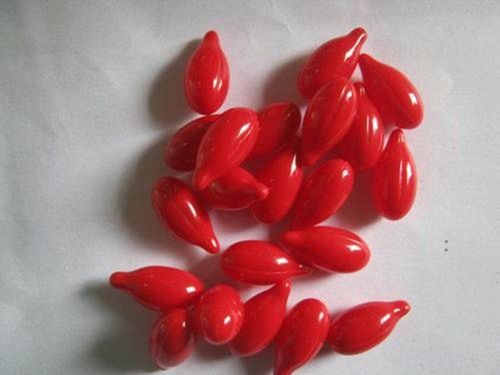
Uống vitamin A liều cao giúp phòng bệnh thiếu vitamin A
Propaganda and education
Propaganda on the dangerous level of vitamin A deficiency. Educate and guide mothers to know the signs of night blindness for early treatment and avoid blindness. Add vitamin A to children's meals: from foods rich in vitamin A. Organize and implement a program to prevent vitamin A deficiency. It can be seen that Vitamin A plays a very important role in health and development. development of young children. Therefore, parents should pay attention and supplement vitamin A for children in moderation. In addition to vitamin A supplementation, for comprehensive development of children, parents should also provide children with supporting products containing lysine, essential micro-minerals and vitamins such as zinc, chromium, selenium, group vitamins. B helps to fully meet the nutritional needs of children. At the same time, these essential vitamins also support digestion, enhance nutrient absorption, help improve anorexia, and help children eat well. Parents can simultaneously apply dietary supplements and functional foods derived from nature for easy absorption. Please accompany your child throughout the development process and regularly visit the website vimec.com to update useful baby care information.





